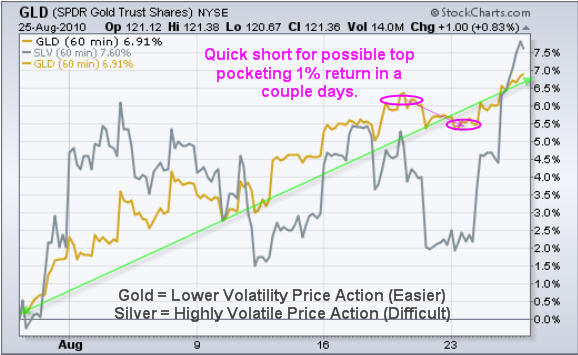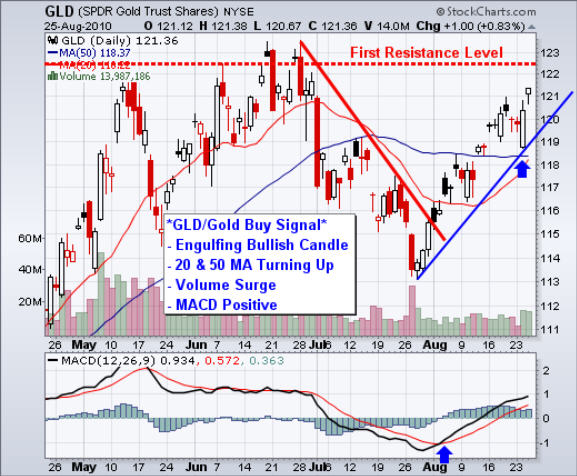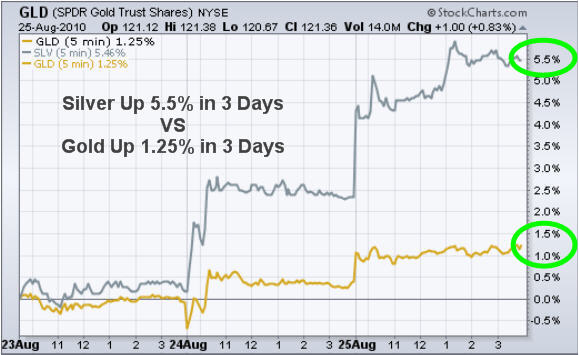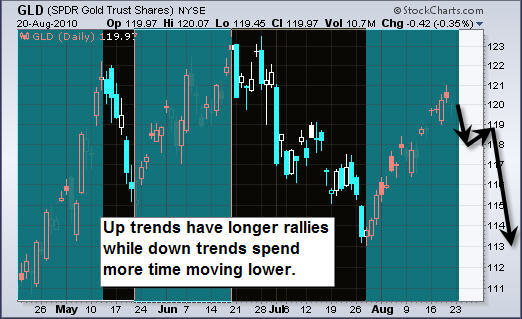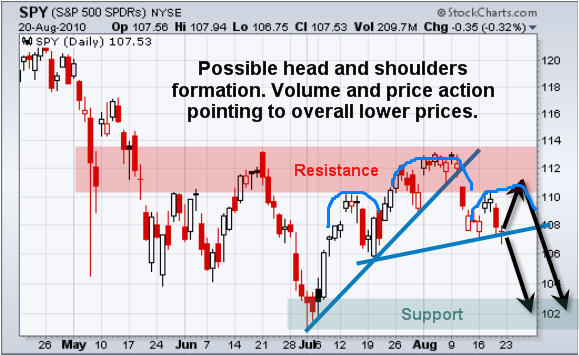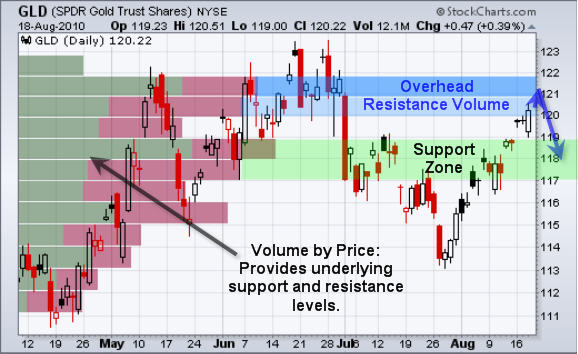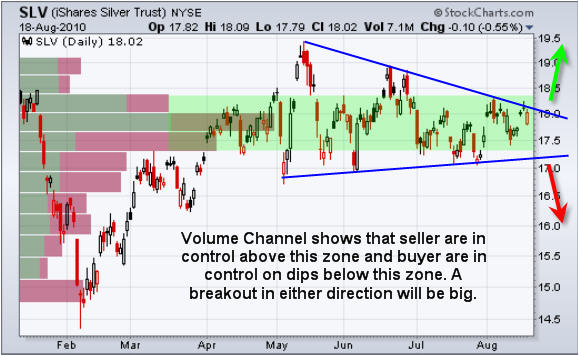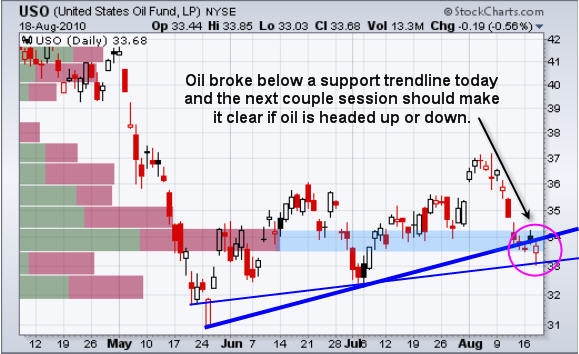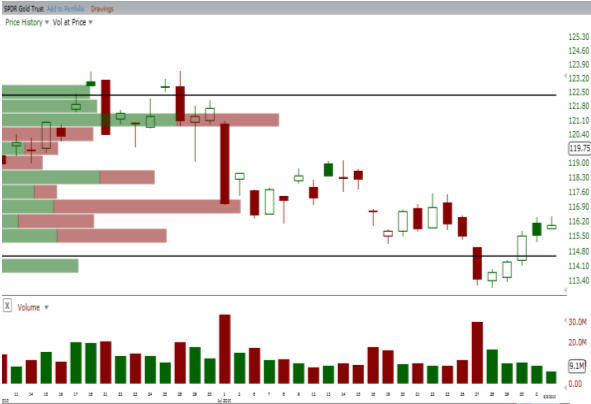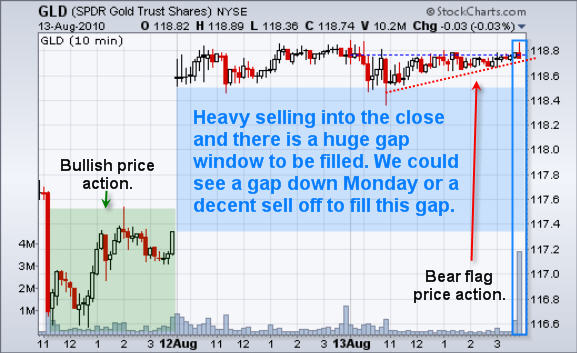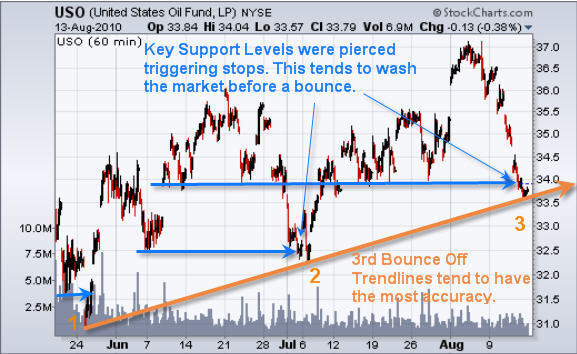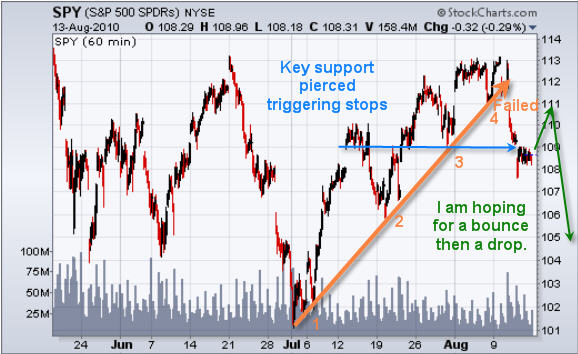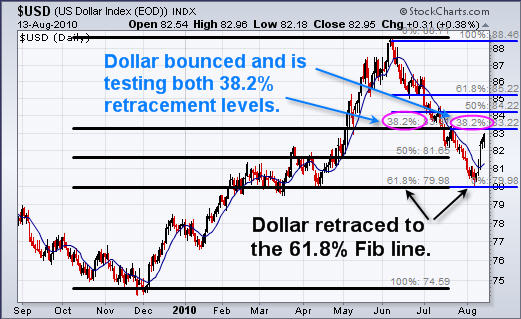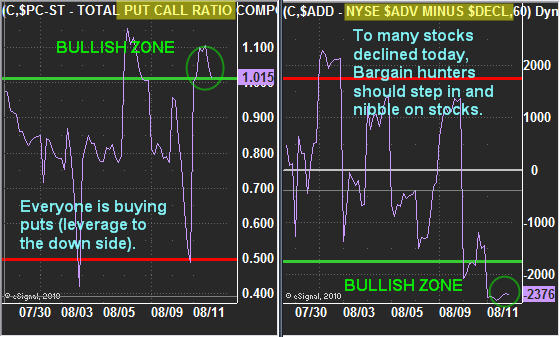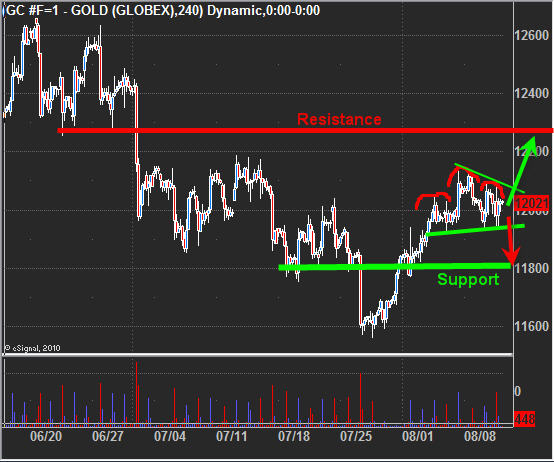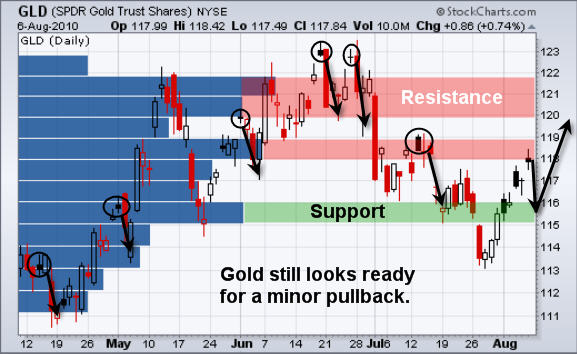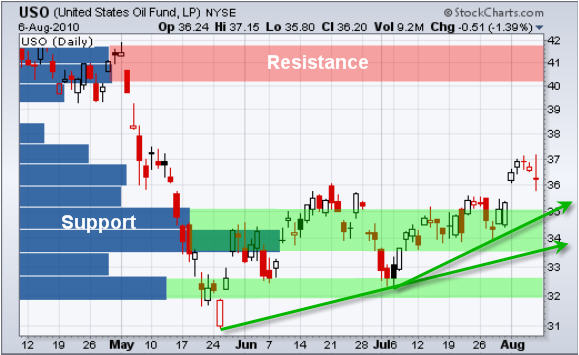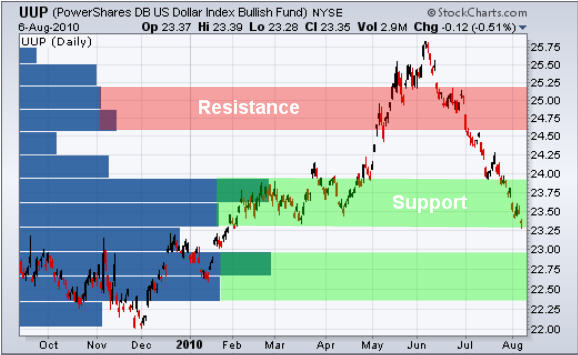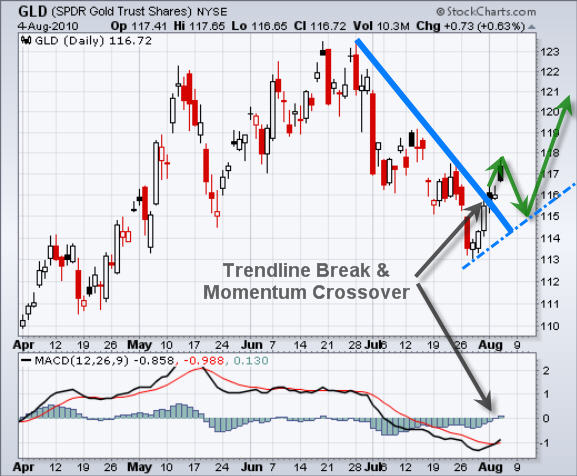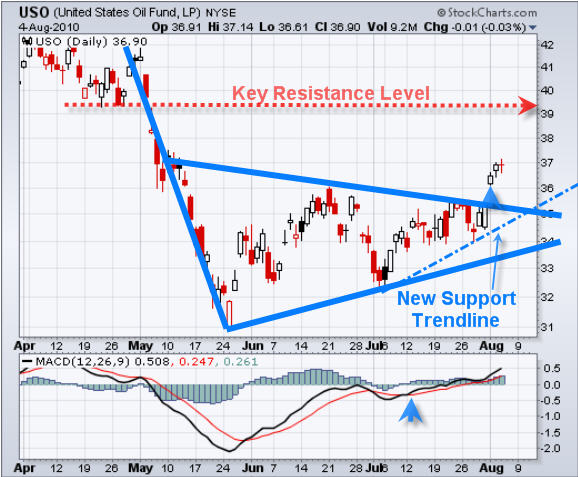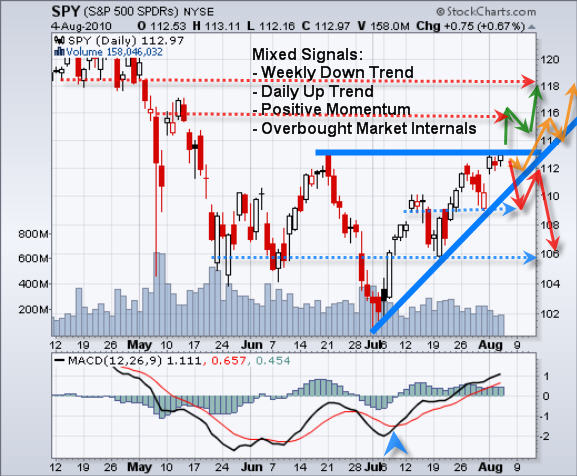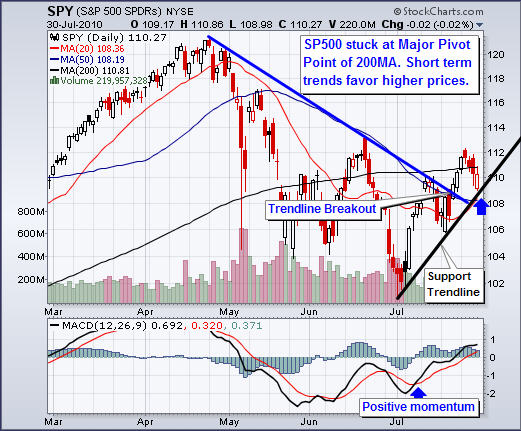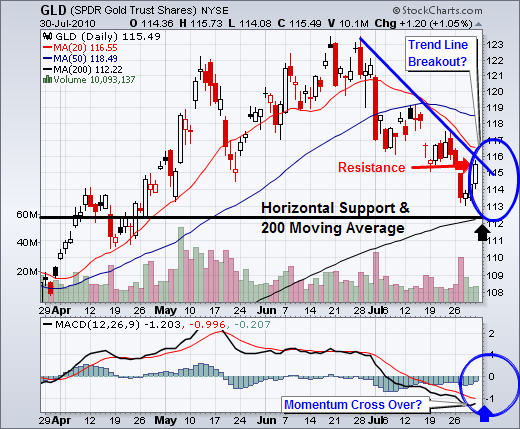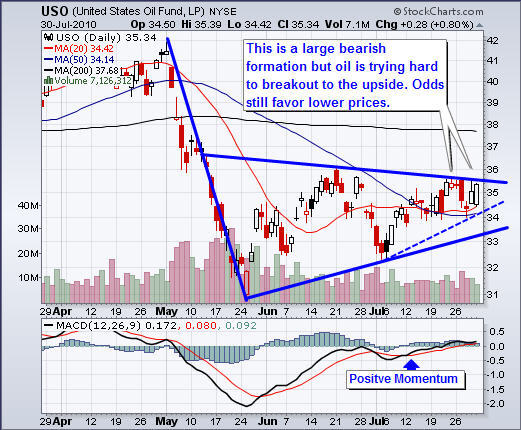Wed Aug 25th
Understanding the key differences between both gold and silver’s risk/volatility levels plays a large part in how I choose a low risk trade setup. Those of you who follow me already know the GLD etf is my favorite trading vehicle as it provides me with low risk trading setups along with a very high win rate.
Ok, let’s jump into to comparing gold and silver as trading instruments. I get the same questions from new traders all the time and I think these two questions will help clear them up.
The questions are:
1. Why don’t you give silver (SLV) trading analysis/signals?
2. Why don’t you trade silver?
My answer to the questions are simple and the chart below displays my view.
The gold (GLD) signals I provide work with silver so you can just trade silver when I have gold long or short trade. This is the reason I don’t provide much silver analysis because it’s duplicate info.
The chart below shows how gold and silver trade together when it comes to rallies and sell offs. But notice how volatile silver is while gold had a nice slow and steady trend upwards… Gold’s low volatility trending characteristics is what I love about it. Silver on the other hand is all over the place making it easy to have protective stops triggered before the majority of the trend is over. The silver charts almost always look terrible (tough to read for a direction). I really don’t like getting shaken out of a winning trade…
The pink circles show a quick short trade we did this week catching a quick 1% drop. The short trade was for FuturesTradingSignals where we capture 1-3 day extreme market sentiment shifts.
GLD – Gold ETF Trading Chart
The chart below shows several points as to why gold/silver was screaming BUY ME on Tuesday afternoon. The two things that carry 90% of the strength in my opinion are the candlestick pattern (Bullish Engulfing) and the volume surge. Those two things when seeing on virtually any time frame are a good indication to go long for 1-3 candlesticks minimum.
Gold VS Silver – 5 Minute 3 Day Chart
This chart clearly shows the power of trading a more volatile commodity with silver being the one. This week’s buy signal in gold is dwarfed by the performance of silver. Silver has always shined more in my opinion but when it comes to trading… It tougher than it looks to trade because of the wild whipsaw action it makes on a regular basis.
Gold and Silver Trading Conclusion:
In short, gold is the safe haven when it comes to actively trading. I do trade silver here and there but the size of my position is much smaller because of the difficulty level and volatility associated with it. I will not that I do trade gold and silver futures at times but for this report I focused on ETF’s.
If you want to get my Trading Analysis and ETF Trading Alerts Join My Newsletter: www.TheGoldAndOilGuy.com
Chris Vermeulen
GET THESE FREE EDUCATIONAL REPORTS EACH WEEK

